Here is part 2 of the 3 course Umami menu. If you want to take a look at the recipe and how to for the starter, you can find it here. After such an explosive umami start on the menu, we tone it down a bit with a perfectly grilled cote de beouf, or a bone in ribeye if you like. You can of course prepare and serve the ribeye without the bone, but in the meat by the bone is where most of the delicious dry agetaste is located. Along with the steak, I made some homemade corn bread with rendered fat from the fat cap, which is cut away from the meat after dry aging. As a spreadfor the bread, I made honey butter. And to tame all the fat, a fresh chimichurri is also served. Chimichurri is in my opinion the very best accompaniment to any steak, especially a dry-aged one.
The menu:
Starter:
Beef Tartare of the ribeye lifter cap and cut away from the aging process, served with “caviar” made on truffle beer, Cured egg yolk. Beetroot mayonnaise, and ciabatta
Main:
Grilled côte de boeuf, cornbread made with rendered fat from the ribeye fat cap (liquid gold), honey butter and chimichurri.
Dessert:
Akutaq with a Umami twist
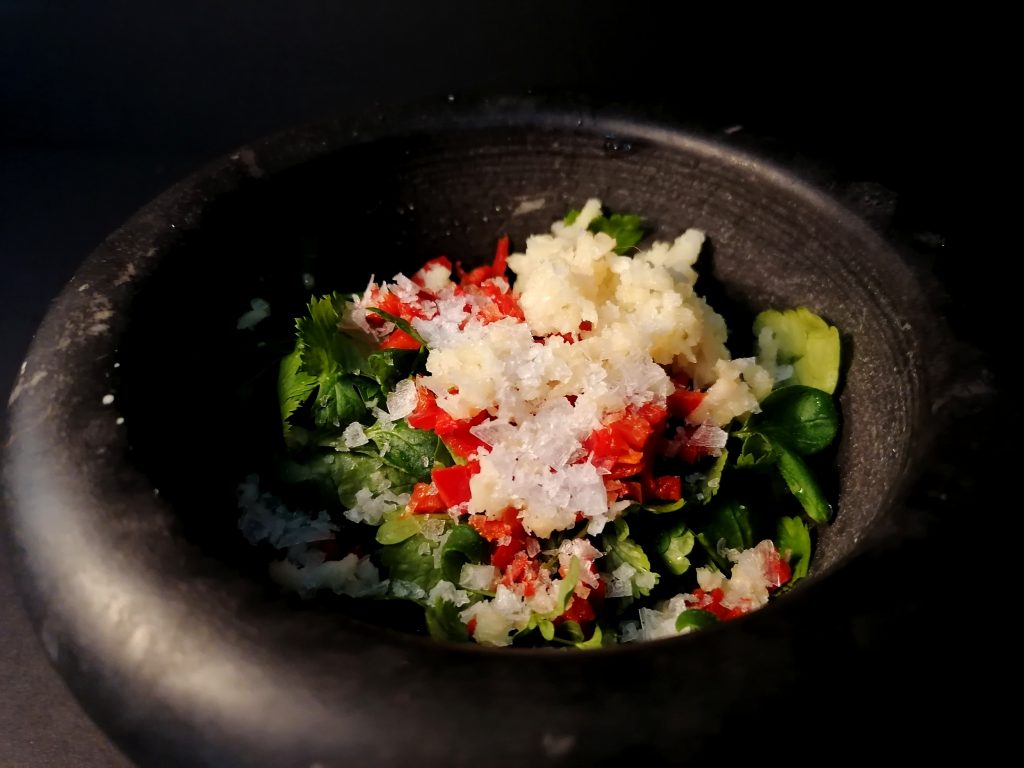
Chimichurri
A good chimichurri is fresh, sour and a little spicy. When serving, for example, a Ribeye steak that has a lot of fat andhence a really good beefy flavor, it is important with a little acidity to round off the overall experience of the meal. As I said, this is my “go to” when cooking steak, and it can be varied endlessly by adding other herbs, onions, etc. Below is my basic version
Chimichurri:
- 3-4 Tbs Applecider vinegar
- 1-2 cloveless garlic (china Garlic)
- 0.5 dl Quality olive oil
- salt
- 1 chilli without the seeds
- Fresh parsly
- Fresh cilantro
- Fresh oregano or basil
- 1 lime (juice)
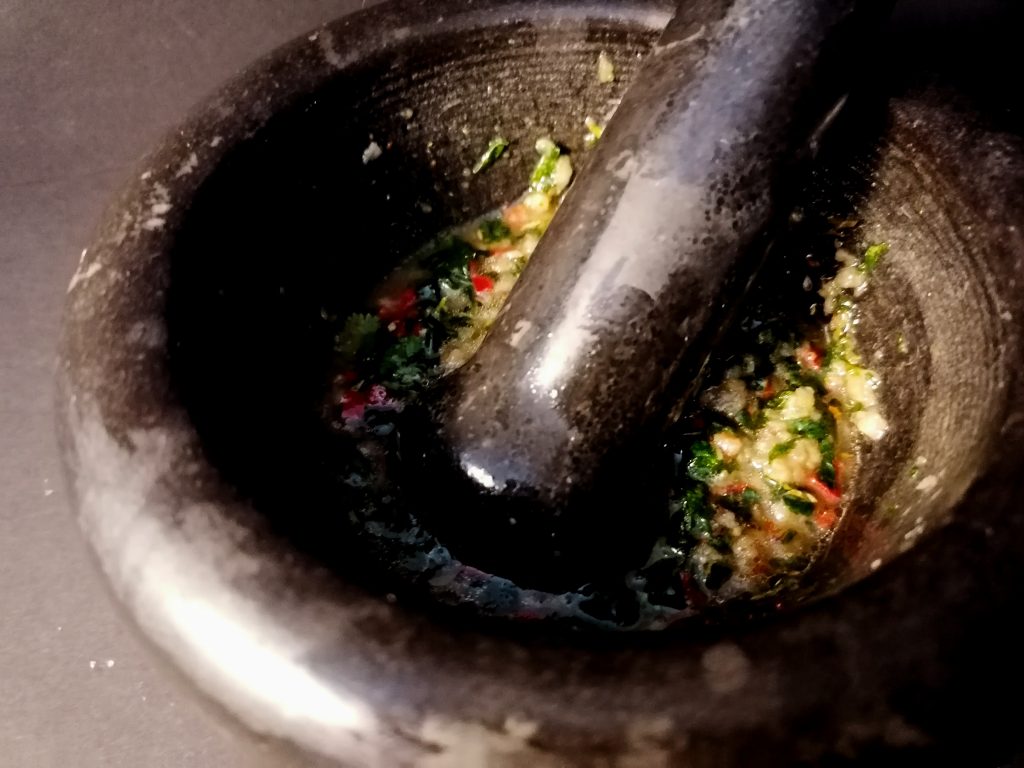
Mortar
I always make chimichurri in a mortar, then you keep a little crunch in the herbs, and you avoid it becoming a light green “soup” as it quickly becomes if you run it in a food processor. Put all the dry ingredients and lime juice in a mortar and stir well while pouring in oil. Season with salt
Honey butter
- 250 g Butter
- 2 Tbs honey
- A pinch of cosher salt
Room temperature
Make sure the butter is soft and at room temperature. Divide the butter into cubes and whisk until smooth (I use the “K-blade” in the food processor for this, but you can probably use a whisk as well) Whisk in the honey and salt with the butter and continue whisking for 2-3 minutes. I am so lucky that my father-in-law has his own bee hives, and I then get good Norwegian quality honey without additives. So do not be a “cheap ass” when buying honey, but buy a really GOOD honey for this.
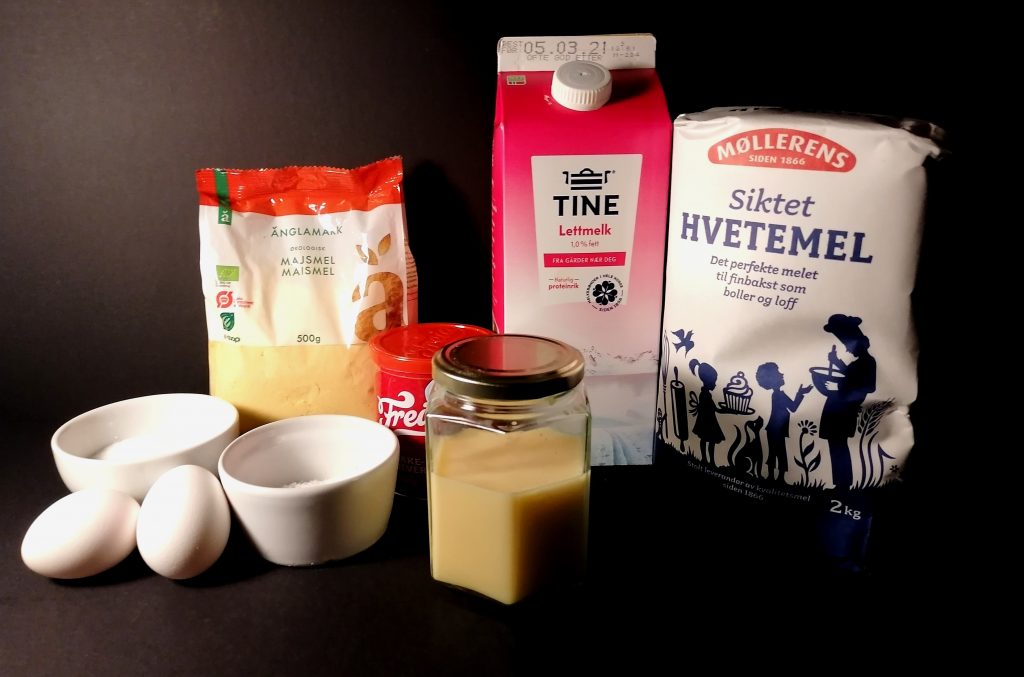
Cornbread
- 2.5 dl Corn flour
- 2.5 dl All purpose flour
- 4 Tbs Sukker
- 2 eggs
- 5 ts baking soda
- 2dl milk
- 1 ts salt (cosher/flaked)
- 5 ss rendered fat. (liquid gold)
On the grill or in the oven?
I prefer to cook cornbread on the grill, in a cast iron pan. But no matter what you choose to use, the grill / oven should maintain a temperature of about 392 degrees F. While you wait for the grill to get warm, put together the mixture. Start by whisking eggs, sugar, milk and rendered fat. (The fat must be tempered slightly so that it is in a liquid state) Then mix in the rest of the ingredients. The batter should have about the same consistency as a slightly thick waffle batter. Let the batter swell in the fridge for 15-20 minutes while you wait for the grill to get nice and hot. When the grill is ready and the batter has swelled a bit. Pour a greased cast iron pan about half full with batter, it will raise a little. Bake for 15-20 minutes until the cornbread is golden / light browned on top. Let it cool for 30 minutes before cutting it. Serve straight from the pan ..
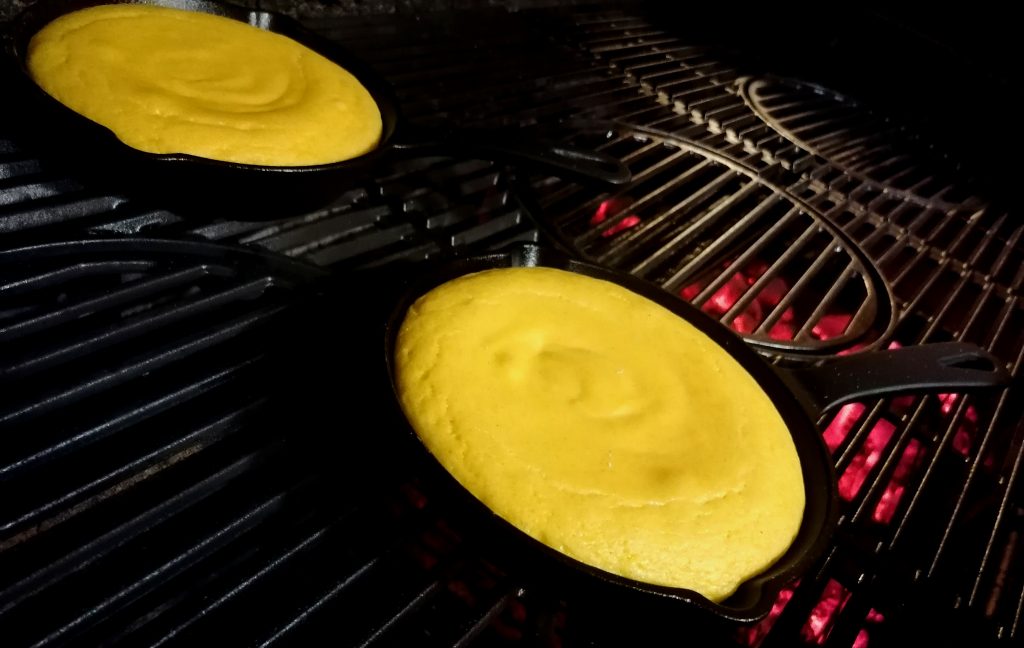
Grilled Côte de boeuf
- A thick “2-3 inch” dry aged bone in ribeye
- Maldon salt (cosher salt)
- A little butter or rendered fat for searing (liquid gold)
Reverse sear
When I grill steak, especially thick cuts. I prefer to do a reverse sear. There are mainly 2 reasons for this. You get more smoke / grill taste in the meat, and it is super easy to get a perfect sear/internal temperature every single time, plus you can time the serving a little easier as you do not have to wait for the meat to be finished. You can read more about the reverse sear method here.
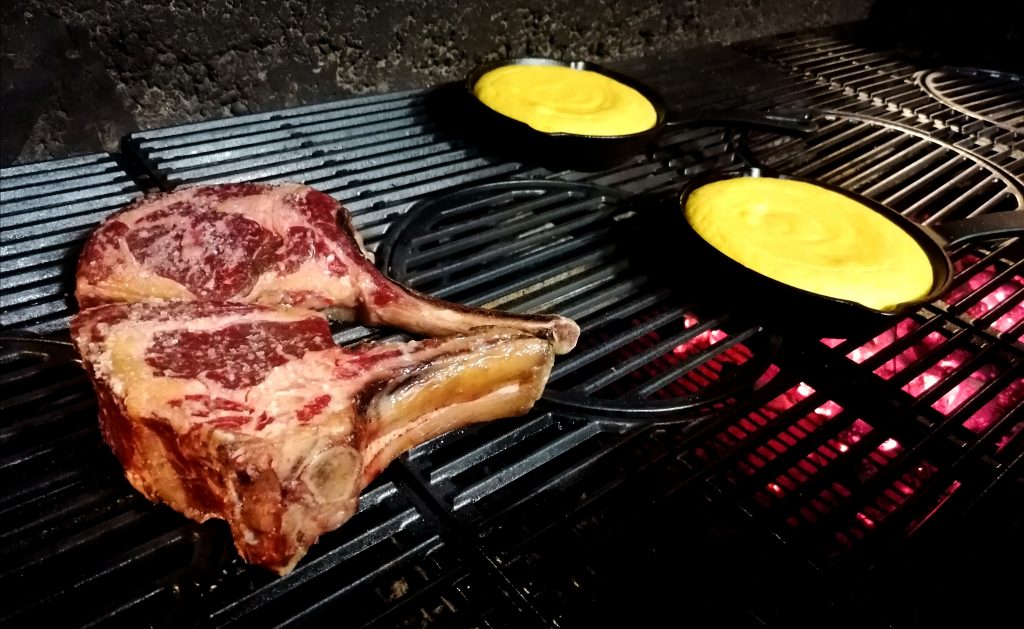
Grilled steak
Light the char coal, and try to have the grill maintain a stable temperature of 175-250F, the number is not so important as long as it is a steady and relatively low temperature. Use charcoal and preferably some fruit wood or similar to add a little smoke flavor. (Avoid woods that give off a very strong smoke flavor, such as hickory, mesquite, etc as it will smoke out the delicious umami taste of the dry-aged meat) Salt the meat abundantly on all sides before placing the meat on indirect heat on the grill. Leave the meat alone until you have an internal temperature of about 120F (Note that dry-aged meat cooks MUCH faster than a traditional steak, so keep an eye on the temperature). Take the meat off the grill, put on a cast iron pan and set the grill to max. Put a Tbs or so of rendered fat or butter in the pan and sear the meat quickly on all sides. Alternatively, you can sear the meat directly on the hot charcoal. Let the steak rest for a few minutes before you cut the steak into suitably thick slices and sprinkle with a little table salt. If you got a steak with a lot of fat on it, feel free to sear these slices a little extra if you want an even crispier fat cap.
Dessert
The main event is all done. Go to part 3 to see how to make Akutaq



0 Comments